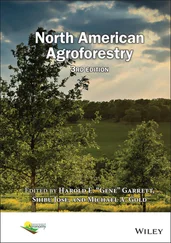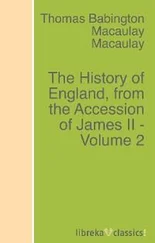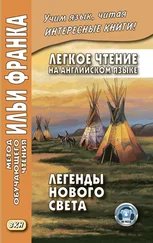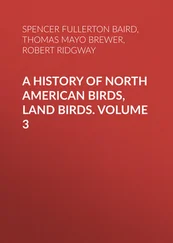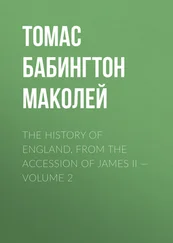Robert Ridgway - A History of North American Birds, Land Birds. Volume 1
Здесь есть возможность читать онлайн «Robert Ridgway - A History of North American Birds, Land Birds. Volume 1» — ознакомительный отрывок электронной книги совершенно бесплатно, а после прочтения отрывка купить полную версию. В некоторых случаях можно слушать аудио, скачать через торрент в формате fb2 и присутствует краткое содержание. Жанр: foreign_antique, Биология, foreign_edu, на английском языке. Описание произведения, (предисловие) а так же отзывы посетителей доступны на портале библиотеки ЛибКат.
- Название:A History of North American Birds, Land Birds. Volume 1
- Автор:
- Жанр:
- Год:неизвестен
- ISBN:нет данных
- Рейтинг книги:3 / 5. Голосов: 1
-
Избранное:Добавить в избранное
- Отзывы:
-
Ваша оценка:
- 60
- 1
- 2
- 3
- 4
- 5
A History of North American Birds, Land Birds. Volume 1: краткое содержание, описание и аннотация
Предлагаем к чтению аннотацию, описание, краткое содержание или предисловие (зависит от того, что написал сам автор книги «A History of North American Birds, Land Birds. Volume 1»). Если вы не нашли необходимую информацию о книге — напишите в комментариях, мы постараемся отыскать её.
A History of North American Birds, Land Birds. Volume 1 — читать онлайн ознакомительный отрывок
Ниже представлен текст книги, разбитый по страницам. Система сохранения места последней прочитанной страницы, позволяет с удобством читать онлайн бесплатно книгу «A History of North American Birds, Land Birds. Volume 1», без необходимости каждый раз заново искать на чём Вы остановились. Поставьте закладку, и сможете в любой момент перейти на страницу, на которой закончили чтение.
Интервал:
Закладка:
12,965. Total length, 7.50; wing, 3.30; tail, 3.40; its graduation, .45; exposed portion of first primary, 1.42, of second, 2.15, of longest, or fourth (measured from exposed base of first primary), 2.45; length of bill from forehead, .90, from nostril, .60; along gape, 1.07; tarsus, 1.02; middle toe and claw, .90; claw alone, .25; hind toe and claw, .76; claw alone, .35.
Hab. Only observed at Cape St. Lucas, Lower California.
This species is most nearly allied to C. brunneicapillus ; the most apparent difference at first sight being in the greater concentration of black on the throat and jugulum in brunneicapillus , and the much smaller size of the remaining spots on the under parts, with the decided light-cinnamon of the posterior portion of the body. The outer and central tail-feathers alone are marked as in C. affinis , the intermediate ones being entirely black, with the exception of a white subterminal band.
This is one of the most characteristic birds constituting the isolated fauna of Cape St. Lucas. Like nearly all the species peculiar to this remarkable locality, it is exceedingly abundant, breeding in immense numbers. It has not yet been detected elsewhere, though it may possibly be found on the Lower Colorado.
Habits. This recently described species was first discovered by Mr. Xantus, and has, so far as is known, a somewhat restricted locality, having been met with only at the southern extremity of Lower California, where it is an exceedingly abundant bird. Mr. Xantus has published no observations in regard to its habits, which, however, are probably very nearly identical with those of the more common species. From the brief memoranda given by him in the general register of his collections, made at Cape St. Lucas, we gather that their nests were built almost exclusively in opuntias, cacti, and the prickly pear, and were generally only four or five feet from the ground, but occasionally at the height of ten feet.
The nests are large purse-shaped collections of twigs and coarse grasses, very similar to, and hardly distinguishable in any respect from, those of the more northern species. The eggs vary from 1.05 to 1 inch in length, and from .65 to .70 of an inch in breadth, and have a reddish-white ground very uniformly dotted with fine markings of reddish-brown, purple, and slate.
Salpinctes , Cabanis, Wiegmann’s Archiv, 1847, I, 323. (Type, Troglodytes obsoletus , Say.)
Gen. Char. Bill as long as the head; all the outlines nearly straight to the tip, then decurved; nostrils oval. Feet weak; tarsi decidedly longer than the middle toe; outer lateral toe much longer, reaching to the base of the middle claw, and equal to the hinder. Wings about one fifth longer than the tail; the exposed portion of the first primary about half that of the second, and two fifths that of the fourth and fifth. Tail-feathers very broad, plane, nearly even or slightly rounded; the lateral moderately graduated.
Of this genus but one species is so far known in the United States, the Rock Wren of the earlier ornithologists. It is peculiar among its cognate genera by having the two continuous plates on each side the tarsus divided into seven or more smaller plates, with a naked interval between them and the anterior scutellæ. Other characters will be found detailed in the Review of American Birds, p. 109.
Troglodytes obsoletus , Say, Long’s Exped. II, 1823, 4 (south fork of Platte).—Aud. Orn. Biog. IV, pl. ccclx.—Ib. B. A. II, pl. cxvi.—Newberry, P. R. R. Rep. VI, IV, 1857, 80.—Heermann, P. R. R. Rep. X, 1859, 41. Salpinctes obsoletus , Cab. Wiegmann’s Archiv, 1847, I, 323.—Baird, Birds N. Am. 1858, 357; Rev. 110.—Sclater, P. Z. S. 1859, 371 (Oaxaca).—Cooper, Orn. Cal. 1, 1870, 64. ? Troglodytes latisfasciatus , Licht. Preis-Verzeich. 1831, No. 82.
Salpinctes obsoletus.
7157♂
Sp. Char. Plumage very soft and lax. Bill about as long as the head. Upper parts brownish-gray, each feather with a central line and (except on the head) transverse bars of dusky, and a small dull brownish-white spot at the end (seen also on the tips of the secondaries). Rump, sides of the body, and posterior part of belly and under tail-coverts dull cinnamon, darker above. Rest of under parts dirty white; feathers of throat and breast with dusky central streaks. Lower tail-coverts banded broadly with black. Inner tail-feathers like the back, the others with a broad black bar near the end; the tips cinnamon; the outer on each side alternately banded with this color and black. A dull white line above and behind the eye. Iris brown. Length, 5.70; wing, 2.82; tail, 2.40. Young not marked or banded beneath. Eggs white, spotted with red.
Конец ознакомительного фрагмента.
Текст предоставлен ООО «ЛитРес».
Прочитайте эту книгу целиком, купив полную легальную версию на ЛитРес.
Безопасно оплатить книгу можно банковской картой Visa, MasterCard, Maestro, со счета мобильного телефона, с платежного терминала, в салоне МТС или Связной, через PayPal, WebMoney, Яндекс.Деньги, QIWI Кошелек, бонусными картами или другим удобным Вам способом.
1
We are indebted to Professor Theodore N. Gill for the present account of the characteristics of the class of Birds as distinguished from other vertebrates, pages XI-XV.
2
Dr. Coues, in his “Key to North American Birds,” gives an able and extended article on the general characteristics of birds, and on their internal and external anatomy, to which we refer our readers. A paper by Professor E. S. Morse in the “Annals of the New York Lyceum of Natural History” (X, 1869), “On the Carpus and Tarsus of Birds,” is of much scientific value.
3
Carus and Gerstaecker (Handbuch der Zoologie, 1868, 191) present the following definition of birds as a class:—
Aves.Skin covered wholly or in part with feathers. Anterior pair of limbs, converted into wings, generally used in flight; sometimes rudimentary. Occiput with a single condyle. Jaws encased in horny sheaths, which form a bill; lower jaw of several elements and articulated behind with a distinct quadrate bone attached to the skull. Heart with double auricle and double ventricle. Air-spaces connected to a greater or less extent with the lungs; the skeleton more or less pneumatic. Diaphragm incomplete. Pelvis generally open. Reproduction by eggs, fertilized within the body, and hatched externally, either by incubation or by solar heat; the shells calcareous and hard.
4
Methodi naturalis avium disponendarum tentamen. Stockholm, 1872-73.
5
This group is insusceptible of definition. The wading birds, as usually allocated, do not possess in common one single character not also to be found in other groups, nor is the collocation of their characters peculiar.
6
Corresponding closely with the Linnæan and earlier Sundevallian acceptation of the term. Equivalent to the later Oscines of Sundevall.
7
As remarked by Sundevall, exceptions to the diagnostic pertinence of these two characters of hind claw and wing-coverts taken together are scarcely found. For, in those non-passerine birds, as Raptores and some Herodiones , in which the claw is enlarged, the wing-coverts are otherwise disposed; and similarly when, as in many Pici and elsewhere, the coverts are of a passerine character, the feet are highly diverse.
Читать дальшеИнтервал:
Закладка:
Похожие книги на «A History of North American Birds, Land Birds. Volume 1»
Представляем Вашему вниманию похожие книги на «A History of North American Birds, Land Birds. Volume 1» списком для выбора. Мы отобрали схожую по названию и смыслу литературу в надежде предоставить читателям больше вариантов отыскать новые, интересные, ещё непрочитанные произведения.
Обсуждение, отзывы о книге «A History of North American Birds, Land Birds. Volume 1» и просто собственные мнения читателей. Оставьте ваши комментарии, напишите, что Вы думаете о произведении, его смысле или главных героях. Укажите что конкретно понравилось, а что нет, и почему Вы так считаете.


